The 30 smartest animals in the world
Science
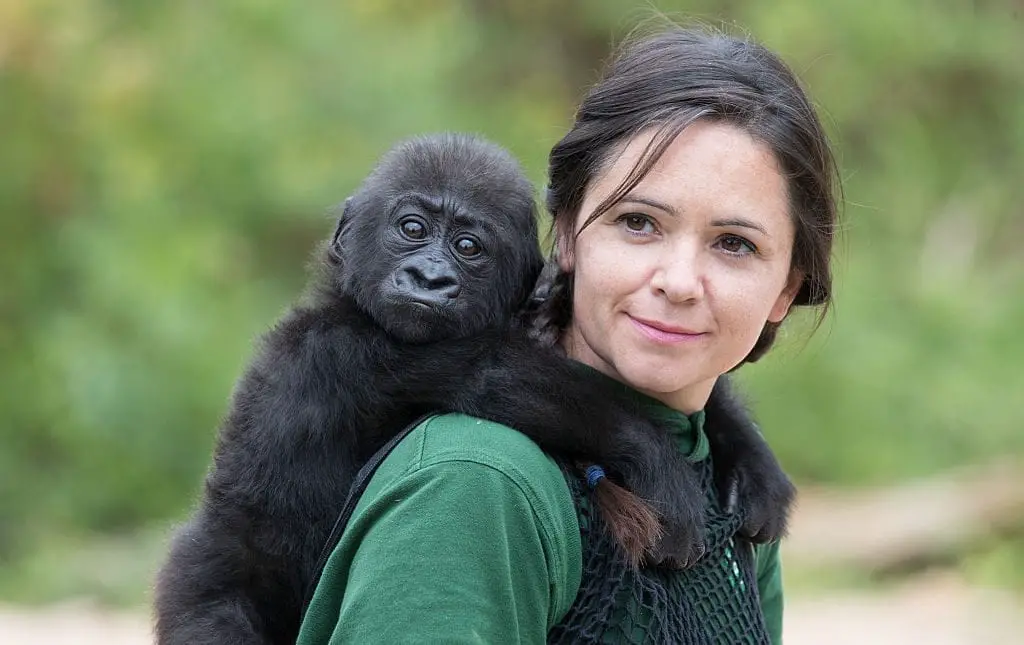
30. New Zealand robins
Getty Images
What makes an animal smart? Scientists have a hard time defining intelligence, but things like problem-solving, communication, emotion, and memory all seem to be part of it. Researchers carefully craft their experiments to try and understand just what it’s like to be an animal. So far, the animals keep surprising us.
When it comes to Valentine’s Day, plenty of women do not receive quite what they wanted from their partner. Some humans are better at pleasing their partners than others, but male New Zealand robins seem to be all around good at it.
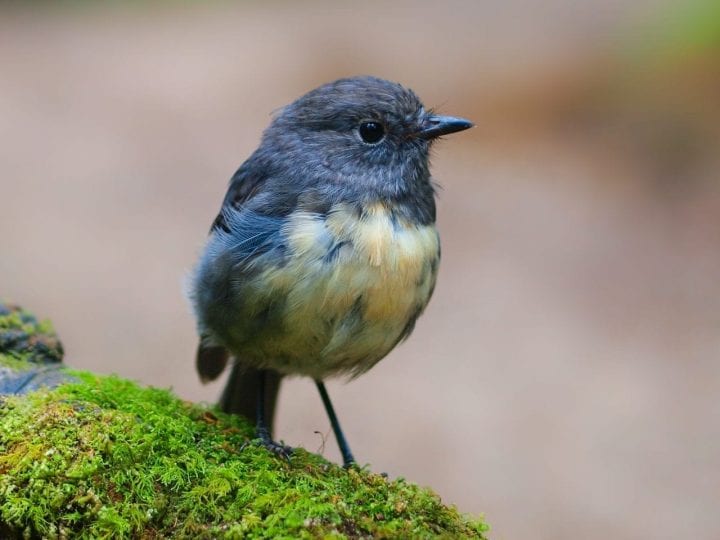
CreativeNature_nl/iStock
Male robins are very good at reading their mate’s behavior to determine what she wants to eat next. Like most people, female robins don’t like to eat the same thing over and over. They like variety in their grub (literally). Male robins accommodate this desire when they share food with their mates; he gives her the perfect present more often than not.
29. Moray eels and groupers
Mutually beneficial, interspecies relationships can be found throughout nature, but none are quite as amazing as the cooperative hunting team of groupers and moray eels. A coral grouper recruits a moray eel (or a massive humphead wrasse) to a hunt by shaking vigorously and then doing a headstand to indicate where prey is hiding.
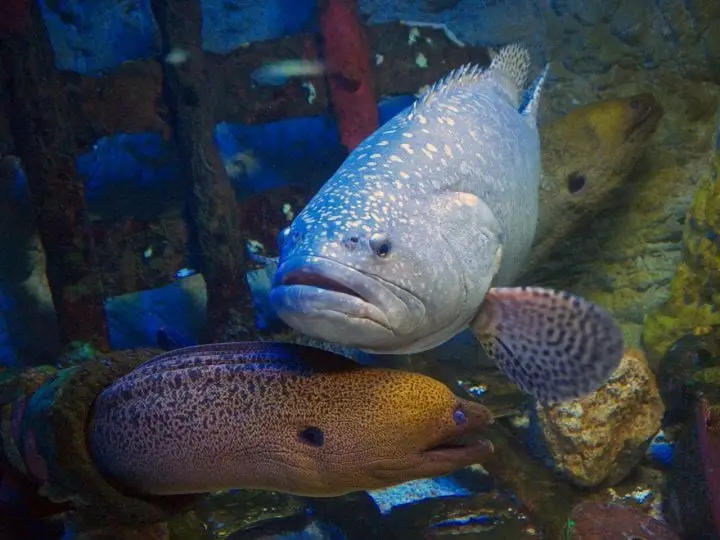
ES3N/iStock
Moray eels and humphead wrasse are very good at getting prey out of tight spaces, while the grouper is very quick and can catch it in open water. When an eel doesn’t respond to the grouper, it swims over and shimmies or even tries to push the eel toward the hidden prey. Coral trout and octopus do a similar cooperative hunt.
28. Emerald anole lizard
The emerald anole, a small green lizard, always attack their prey from above. In the wild, that hunting method works best for them. But researchers wanted to test how well they can adapt to change, so they put food in a hole with a cap. To get the snack, the lizards couldn’t attack from above.
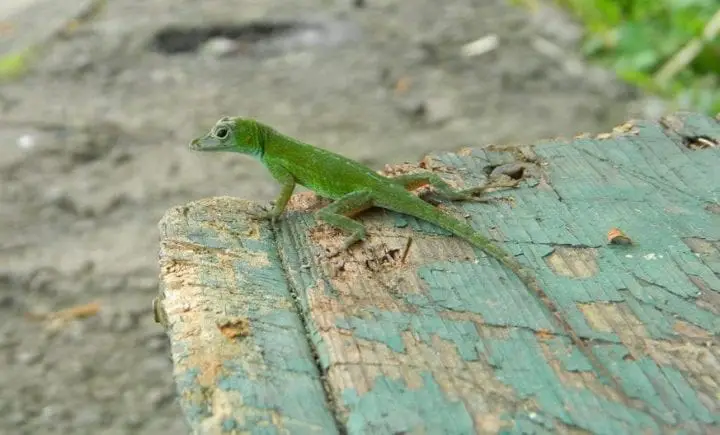
Haruka Mitsu/Wikimedia Commons
Some solved the problem by either biting the cap off from the side or levering it off with their snouts. They had adapted their behavior to the situation, showing a level of intelligence some people thought was beyond reptiles. Many of the original studies on reptile cognition had serious flaws that left the scientists thinking reptiles acted on instinct only, with no ability for flexibility.
27. Ants
Ants work together far better than human societies have ever managed. Of course, ants don’t value individuality quite as much as we do, so they’re more willing to sacrifice themselves for the good of the colony. But it seems that ants working together are actually more efficient than a Google search algorithm.
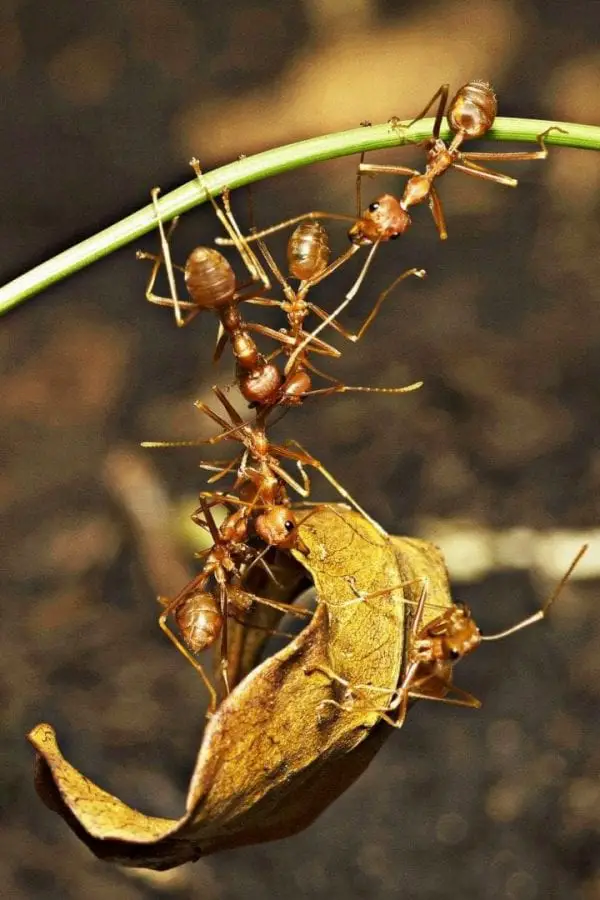
Adisak Mitrprayoon/iStock
Ants smell different “jobs” on each other, so when an ant hasn’t smelled a food ant recently, the ant will switch to that job. Plus, ants have larger brains when compared to other insects, but each individual is akin to a neuron itself. Thus the colony is like one large brain made up of millions of walking neurons.
26. Monitor lizards and red-footed tortoises
Monitor lizards may be one of the smartest reptiles, as they have shown a remarkable skill for problem-solving and learning. Scientists presented several of them with clear tubes housing prey. Quickly, the lizards figured out how to rotate the tube to access the tasty food.
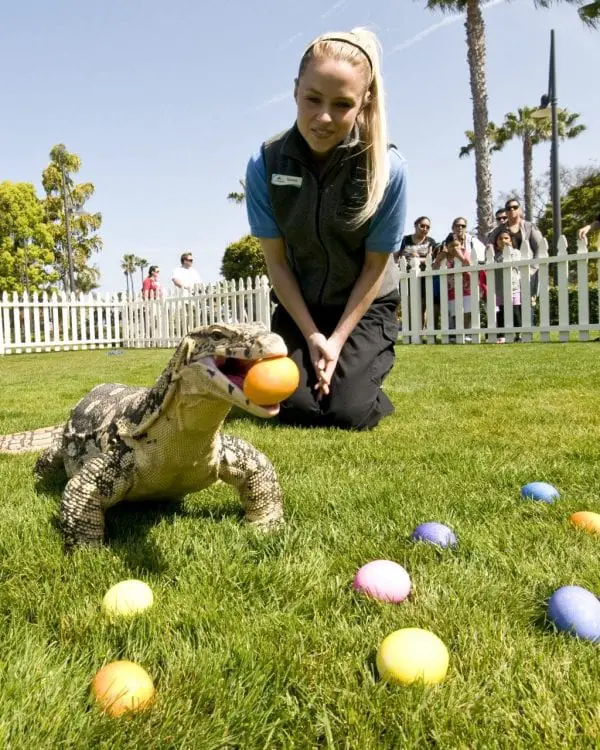
Mike Aguilera/Getty Images
Another reptile, the red-footed tortoise can learn how to solve a problem by watching another tortoise. This surprised scientists since these reptiles don’t live in groups or socialize much, and yet they can still learn from social cues. Plus these tortoises can use environmental landmarks and systematic strategies to efficiently find food in a radial maze.
25. Jumping spider
This spider’s brain is the size of a sesame seed, but it shows remarkable intelligence. They have excellent vision compared to other small critters and use their superior skills to plan sneak attacks on their prey: other spiders. Even if the prey is hiding, these jumping spiders can usually find it.
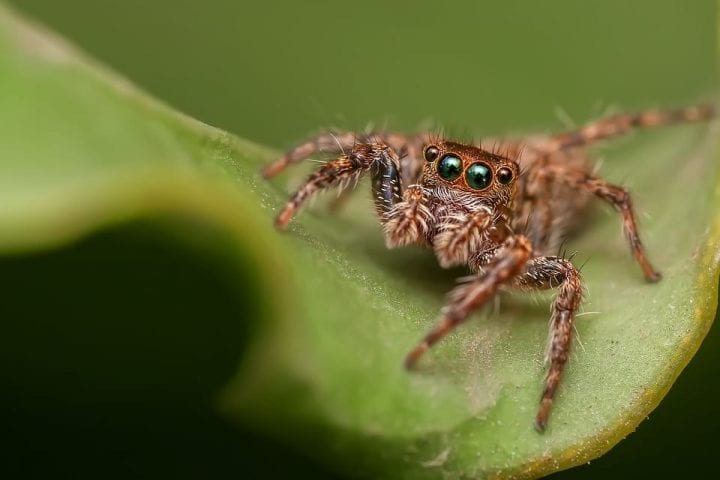
Pixabay
Basically, these spiders have some sort of abstract idea of where their food is. Even if they lose sight of it, the spider continues on its preplanned path to get to the goal. Generally, this sort of forward-thinking is shown only in large vertebrates. But if you’re scared of spiders, take advice from “Doctor Who” and don’t blink because jumping spiders are attracted to it.
24. Blackspot tuskfish
Once upon a time, people believed only humans could use tools. They were proven wrong by chimpanzees, dolphins, crows, sea otters, octopodes, and these fish, too. Blackspot tuskfish like to eat crustaceans, snails, and clams, but all of these animals protect themselves with a hard shell.
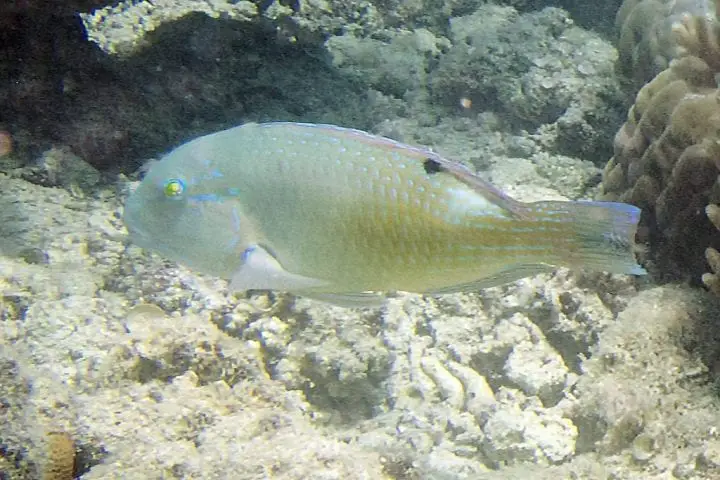
Paul Asman and Jill Lenoble/Flickr
The tuskfish is not fazed by the shell; using its mouth, the fish holds its prey and slams it into a rock over and over until the shell breaks. Now, it can get at the squishy food beneath. Similarly, some wrasse fish break urchins against corals to remove their spines. Fish aren’t as dumb as their reputation might tell you.
23. Honey bees
Honey bees are very similar to ants because they also live in colonies with one breeding queen. But rather than telling their siblings about food via smell, they do a little dance. Its official name is the “waggle dance” and it’s used to tell the colony where and how far away a food source (like a patch of flowers) is from the hive.
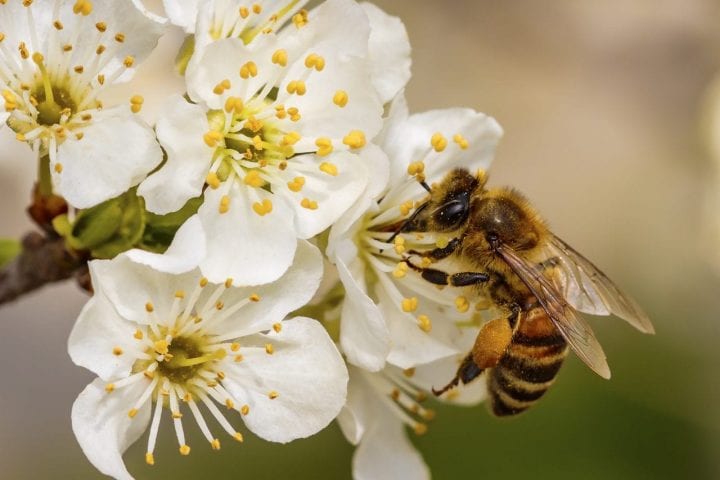
Photografiero/iStock
Not only are bees great at communicating to the colony about food sources, but they can also count, add, and subtract. Scientists effectively taught bees that blue means addition and yellow means subtraction, then the bees solved these little math problems, displaying both long and short term memory in doing so.
22. Manta rays
Manta rays have the biggest brains out of all the fish in the sea; bigger than a whale shark’s, which is the biggest fish in the ocean. While a large brain doesn’t necessarily mean they’re extra smart, the sections of their brain relating to intelligence are also larger than average.
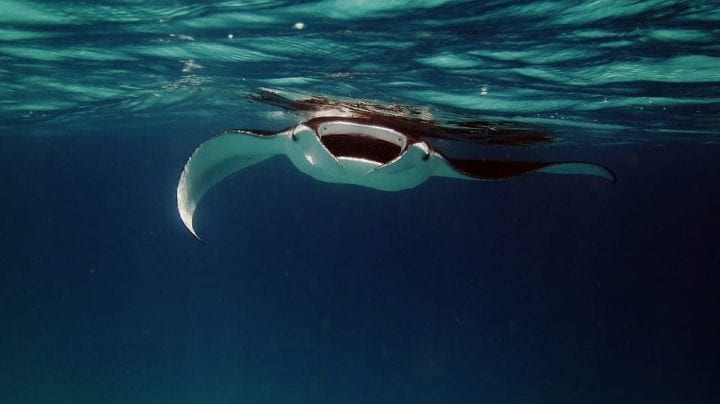
Pixabay
As very social animals, manta rays show interest in humans; they’re curious and friendly. They might even be “self-aware.” When presented with a mirror, manta rays don’t treat their reflection like another ray, but instead, seem to inspect themselves. However, this “mirror test” for self-awareness hasn’t been proven for manta rays and is in some contention itself.
21. Pigeons
Pigeons may seem like dirty rats with wings to many, but they’re really quite smart. For instance, they can distinguish between paintings by Monet and those by Picasso, making them eligible to take art history classes. Plus, they can even distinguish between English words and nonsense, when trained. Although they don’t know the meaning of the words.
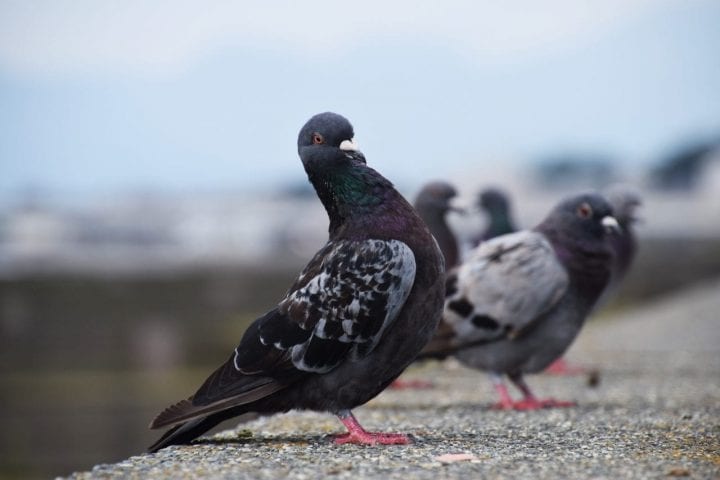
undefined undefined/iStock
Homing pigeons, meanwhile, teach younger generations about the best flying routes. As a sort of culture, this information is passed from generation to generation. People once thought that only humans were capable of accumulating knowledge as a society, but animals, of course, have proved us wrong.
20. Squirrels
Paranoid and high-energy, squirrels show their smarts when they bury their food. If someone or something is watching the squirrel, it may be pretend-burying its food, hiding the real snack under an armpit. After deceiving the onlookers, the squirrel will dash off to actually hide its food.
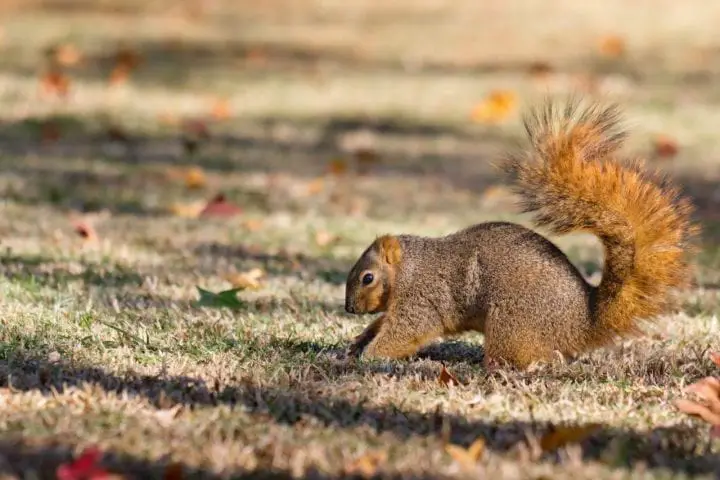
SumikoPhoto/iStock
But before they can get to the deception, squirrels first have to find their food. They’re very crafty and excellent at problem-solving. Several of the animals on this list are ones that live in our cities and are commonly seen as pests. Perhaps their intelligence has allowed them to adapt to thriving alongside humans?
19. Horses
Horses have long been employed by humans and so they’ve picked up a few tricks when it comes to communicating with us. For example, when researchers put carrots out of reach of the horses but within reach of a human, the horses tried to get the person’s attention to alert them of where the carrot was. They knew whether or not the person knew where the carrot was.
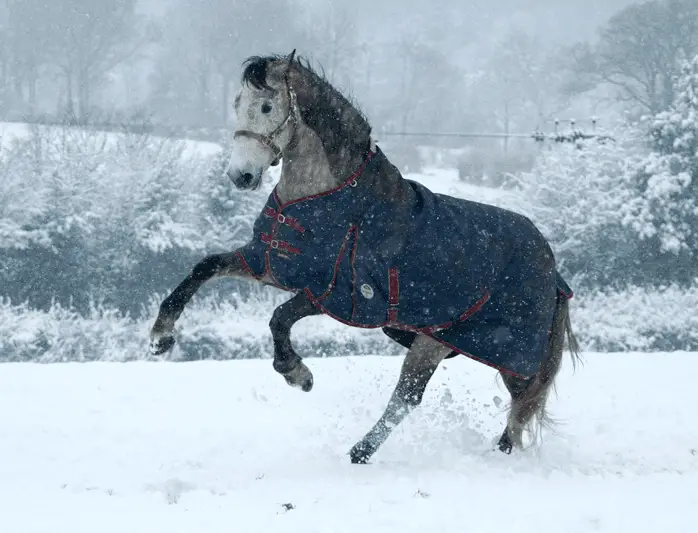
Thowra_uk/Wikimedia Commons
In another study, people taught horses to touch symbols to communicate whether or not they wanted to wear a blanket. The horses weren’t just choosing randomly, but rather according to the weather. When it was wet, cold, or windy, they chose the blanket on sign, versus when it was sunny and warm, they chose the no blanket sign.
18. Rats (and mice)
Scientists use rats in labs because they’re smart and social, like humans. They can count and keep time, which was demonstrated when they were taught to press a button every 15 seconds. Plus they’re altruistic, meaning they sometimes help other rats even when there’s no benefit to themselves.
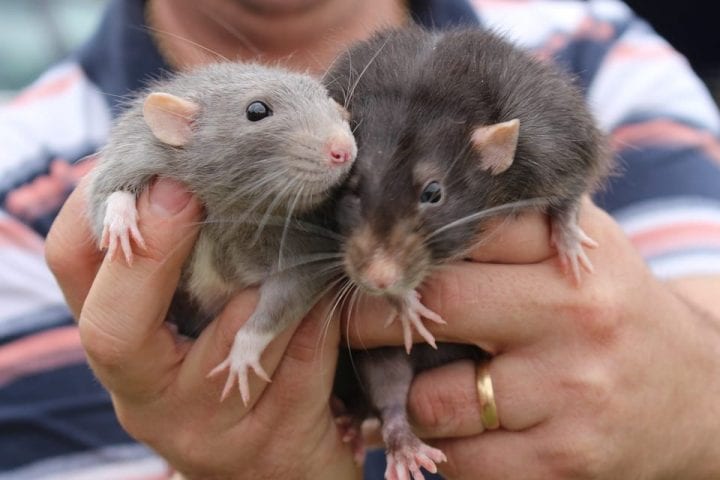
Pixabay
In one experiment, rats learned how to free their friend from a trap and then even shared chocolate with the other rat. In a different experiment, scientists taught rats how to use hooked tools to get cereal. The little rodents also like to be tickled and can feel joy or be depressed. It’s unclear whether or not they can cook, though.
17. Cats
Cat brains are quite similar to ours and seem to be more advanced than dog brains. A cat’s cerebral cortex, which is in charge of processing information, decision making, and problem-solving (among other things), is more complex than a dog’s and has 140 million more neurons. Does this make them smarter than dogs?

Leo_Kostik/iStock
Well, they’re better problem solvers, but they’re more impulsive and less patient. They’re not as good at social activities, but they do seem to take cues from their owners when it comes to new items and experiences. Overall, cats are just harder to research, so there are more cognition studies on dogs.
16. Dogs
Everyone knows dogs are smart, since they work as seeing eye dogs, police dogs, and search and rescue dogs. They are very socially smart, but what they really excel at is being trained. Dogs have evolved alongside humans and thus have become quite adept at doing what we want. They’ve become worse at taking care of themselves, though.

Catherine Ivill/Getty Images
However, recent research says dogs aren’t actually smarter than cats, horses, or any other comparable animals. Scientists have just spent more time researching them and thus have more evidence for their intelligence and cognitive abilities. So they’re smart, just not exceptionally so.
15. Octopodes
Octopuses, octopi, or octopodes, however you want to say it, are incredibly smart animals. They and their other cephalopod relatives (squid and cuttlefish) are the smartest invertebrates around. Countless aquariums have struggled with keeping octopodes because they are so crafty; they can escape from most enclosures.
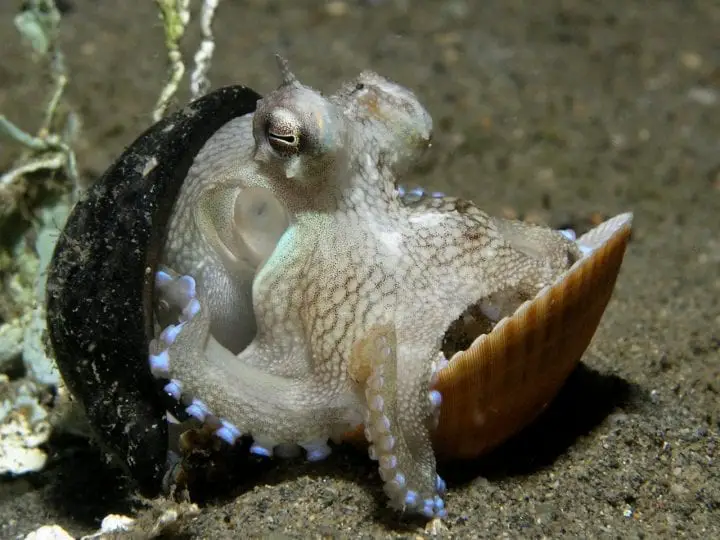
Wikipedia
They can open jars, solve puzzles, and are always curious. In the wild, octopodes use tools. Their tool of choice is a coconut shell, which the octopus might carry across the seafloor to use as a mobile hideout. It’s kind of like when people hitch their tiny house to their car and drive it around the country.
14. Raccoons
Ever curious and crafty, raccoons disrupted a fabled intelligence test by knocking it over. The test consists of food in a tube with water, but the water level is too low for the animal to reach the snack. In theory, the animal will put rocks in the tube to raise the water level and get the treat. Young children aren’t great at this, but crows excel at the task.
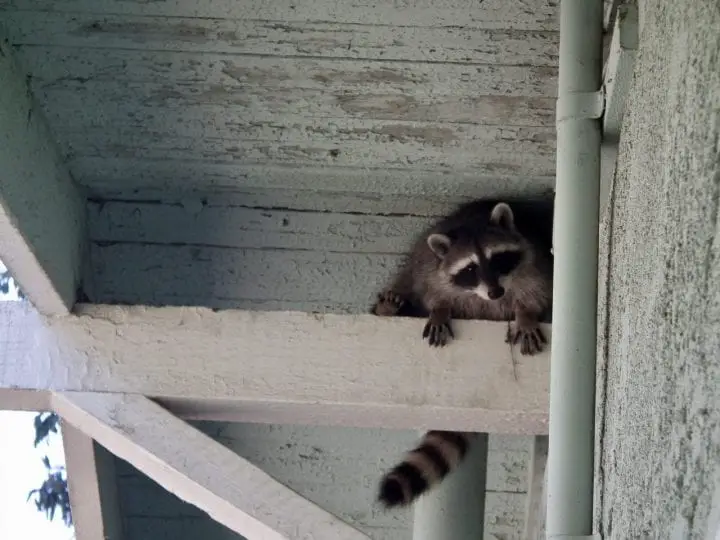
Kiyoshi Tanno/iStock
But of course, raccoons found their own way to get the food. One jumped on the tube and rocked back and forth until it toppled over. In a variation where they had floating and sinking balls to use, a couple raccoons chose the floating balls. They bounced and spun them in the water, hitting marshmallow up the sides or coating the ball in it.
13. Baboons
While they aren’t apes, baboons are still smart in their own ways. They have a simple grasp of math and numbers, as a group of researchers showed when letting them pick a cup with the most peanuts. The baboons could easily tell which cup had more peanuts when the numbers were fairly different, like if the numbers were three and seven.

Paula Bronstein/Getty Images
However, when trying to choose between cups with six or seven peanuts, the baboons only chose the fuller cup about half the time. They acted like children who haven’t learned to count yet or adults making a quick judgment about which cup has more peanuts.
12. Ravens
Ravens and crows are both incredibly smart, defying the phrase “birdbrain.” Scientists once thought that only humans and apes could plan ahead, but ravens have proven them wrong. After being taught that a particular tool and a box got them a treat, the ravens chose that tool out of a lineup even when they didn’t get the box until 17 hours later.
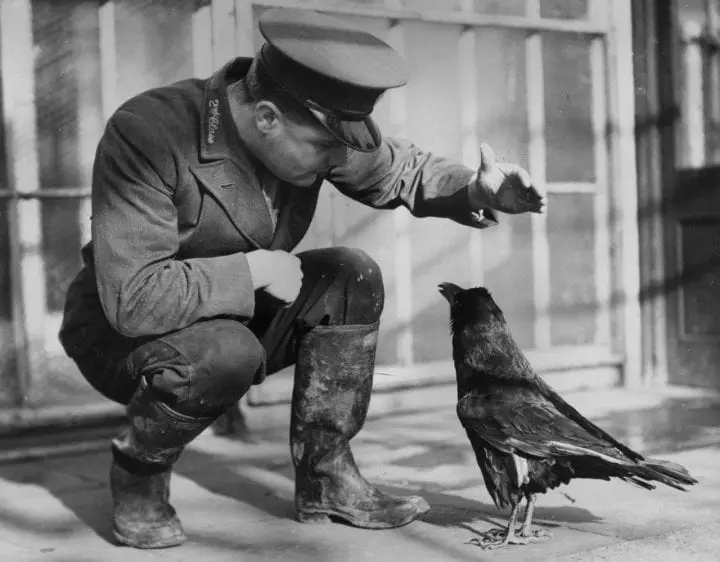
Fox Photos/Getty Images
Young children and monkeys can’t pass this test, but the ravens did just fine. However, understanding the results of experiments like this can be tough. You could argue that the raven was simply choosing the tool most associated with food. Scientists have to carefully design their experiments to eliminate all the other explanations for why the animal did what it did.
11. Whales
Upon observing whale behavior, Atlantis doesn’t seem quite so crazy of a concept. Whales have complex social lives, just like we do. Sperm whales talk to each other with local dialects, in the same way that some people say “soda” and others say “pop.” Plus, they can learn from each other.
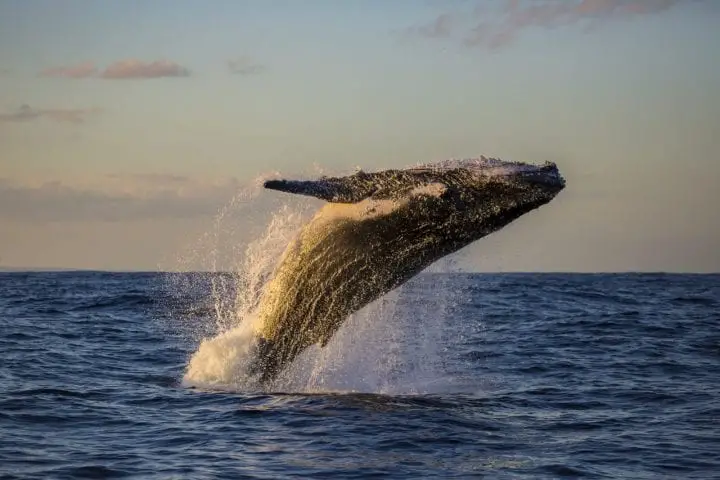
Mark Wong/iStock
Many scientists agree that whales have their own cultures because they pass information from generation to generation. Whales also demonstrate apparently altruistic behavior. Humpback whales seem to object to orcas killing gray whale calves. That’s a pretty complex interaction between three different species, which scientists take as a demonstration of intelligence.
10. Wolves
Sure, dogs get all the attention because they’re easily trained to do what we want, but wolves seem to actually be smarter than dogs. They can understand human communication, like pointing and eye contact, just as well as their domesticated cousins.
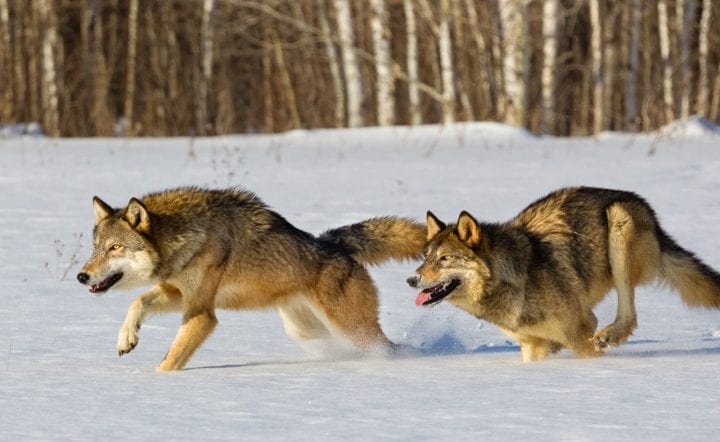
KenCanning/iStock
Plus, wolves seem to understand cause and effect better than dogs. When dogs and wolves were presented with two pieces of string, one attached to cheese and one just near cheese, the wolves kept making the right decision to get the food. The dogs, meanwhile, kept grabbing the string from the same side, even when the two were switched.
9. Pigs
Many people just see pigs as food, but they have their own personalities and are quite emotional animals. They’re empathetic, since they notice emotions in other pigs and sometimes adopt those same emotions. Also, pigs like to play and have long term memories.
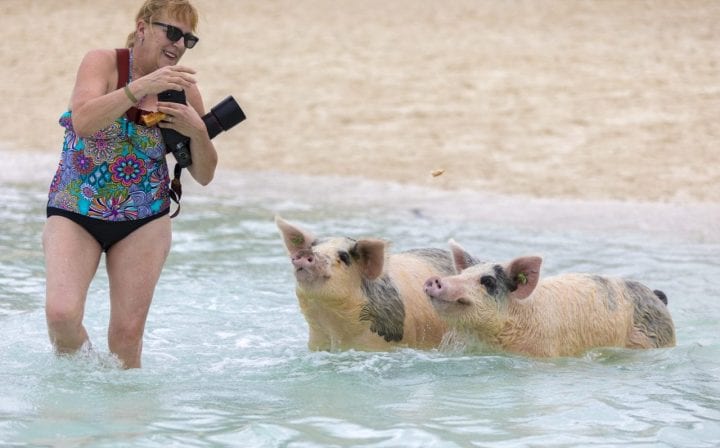
Instants/iStock
But pigs aren’t sweet all the time. Sometimes they deceive other pigs when it concerns food. Plus, pigs can learn to understand mirrors. When pigs saw a food bowl in a mirror, they figured out they needed to walk around a barrier to find the actual food. Many animals can’t figure out how mirrors work and would try to go behind it to get the food.
8. Crows
Crows may seem like merely annoying birds, but they are incredibly smart. They understand cause and effect, since they’re particularly good at getting food out of a water tube. They communicate with each other and are very social. Plus, you definitely don’t want to get on their bad side.
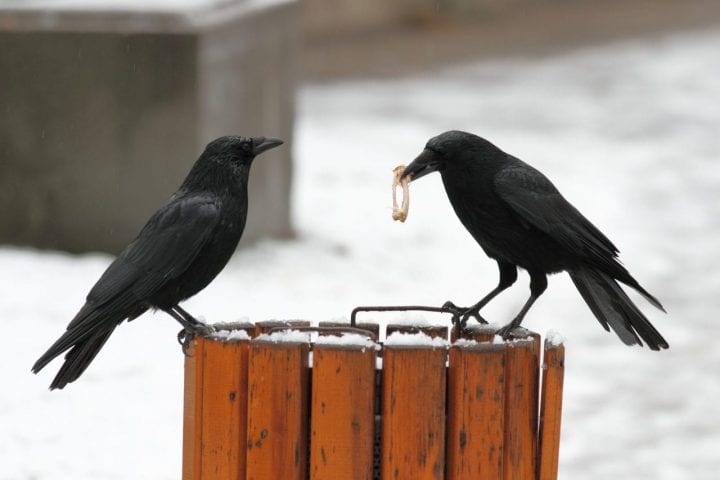
PierreSelim/Wikimedia Commons
These birds remember the faces of people who have done them wrong. They’ll even tell other crows about a dangerous person and remember the threat for years after that person upset them. Crows use tools, too, to grab insects out of logs. Crows are part of a very smart family called the corvids, which includes ravens, jays, and magpies as well.
7. Parrots
Alex the African Grey Parrot surprised everyone with his intelligence. He’d been bought at a pet store by a Harvard graduate student, who taught him over a hundred English words. He counted and recognized colors and shapes. Alex could do simple addition, too.
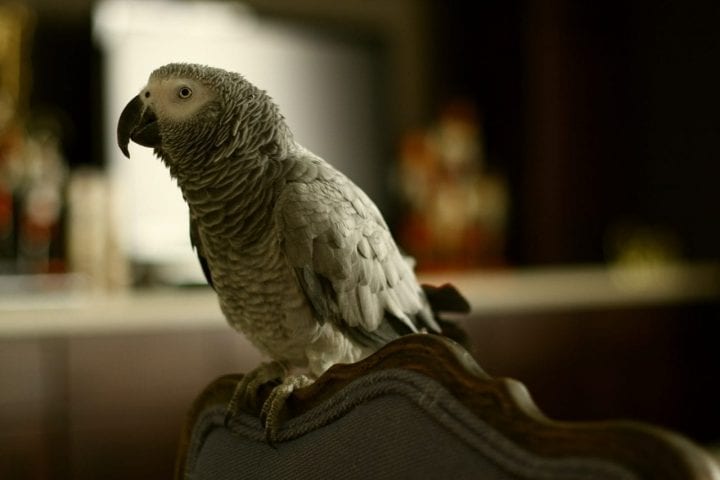
Alex/Wikimedia Commons
Since he was a parrot, he was able to actually say English words, which nonhuman primates have yet to be able to do. Alex knew how to communicate in a rudimentary way, though he couldn’t use logic. He would get frustrated like a two-year-old kid. His species is very social, which is something scientists think leads to the evolution of intelligence.
6. Gorillas
While African grey parrots have Alex as their representative, gorillas have Koko. She was taught to understand 2,000 spoken words and, more impressively, to communicate in sign language with over a thousand different signs. Koko showed everyone just how emotional nonhuman apes can be when she loved and grieved.

FolsomNatural/Flickr
Koko could understand what people said and signed to her. She also communicated back. If she was asked what color something was, she could sign, “orange.” Koko could use a sink and even draw with a pen. Essentially, she seemed to be as intelligent as a young kid. She even had her own pet cats.
5. Elephants
Elephants look nothing like us and yet they are incredibly intelligent. In Africa, elephants have learned (by themselves) to distinguish between different human languages and between different types of speakers. They know male speakers of one language are a threat, since that tribe hunts elephants, while speakers of a different tribe and language do not hunt them.

Cameron Spencer/Getty Images
These enormous animals are also emotional and empathetic. They seem to grieve for their dead, can cooperate to solve puzzles, and recognize themselves in mirrors. Elephants actually cooperate better than crows do, which shows their social intelligence and ability to control themselves when around tantalizing food.
4. Chimpanzees
After making headlines as the first nonhuman animal seen using a tool, chimpanzees continued to amaze humans with their intelligence. Not only do they use sticks to get insects, but they also use sticks as spears to hunt other food. When it comes to memory games, chimps have outperformed adult humans.
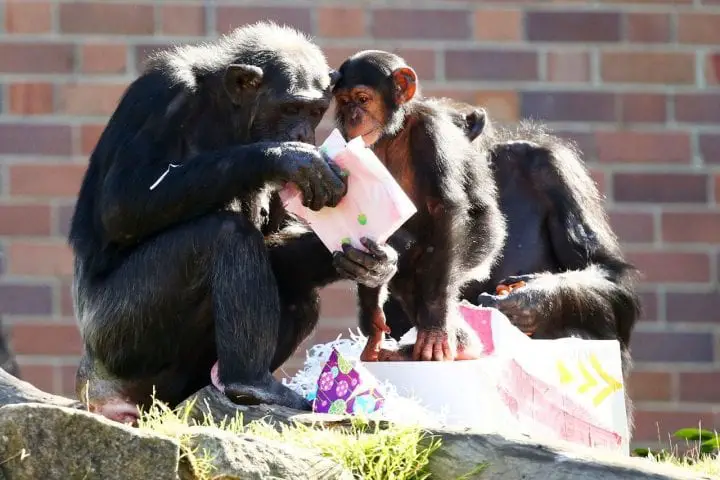
Matt King/Getty Images
Chimps were better at remembering where numbers flashed on a screen. And while people once thought we were the only empathetic ones, chimps console each other. They also go to war against each other, similar to how humans do. Chimpanzees have complex social lives, just like humans, which may have led to their smarts.
3. Bonobos
Chimpanzees may get all the attention as our favorite cousin, but bonobos are just as related to us as we are to chimpanzees. Kanzi the bonobo exemplifies just how smart these apes are. He grew up surrounded by his ape family and researchers. They taught him how to communicate using over 300 different symbols.
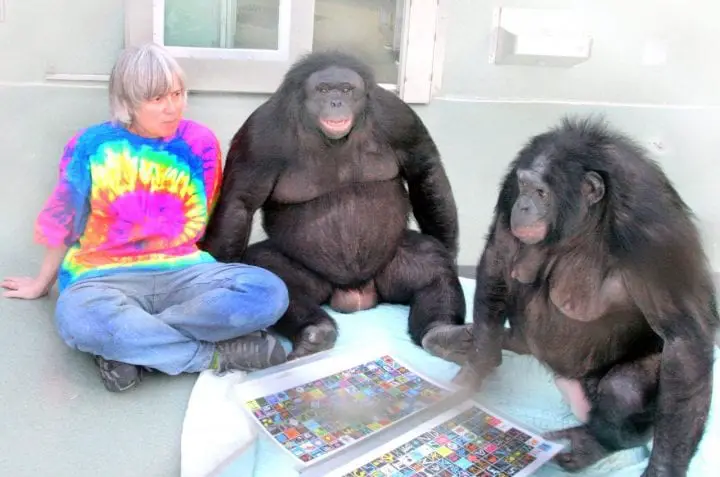
Wikipedia
He understands about 3,000 spoken English words, can start a fire, and even roasts his own marshmallows. Kanzi watches movies with his family, which they pick via pressing buttons. He and his family live in a $10 million house complete with a lab and over a hundred acres of woods.
2. Orangutans
Orangutans may not be our closest relative, but some evidence says they may even be smarter than chimpanzees. Just like a traveler Google-mapping for their road trip, orangutans plan out their travel routes the day before going. They tell other orangutans of their plan, too.
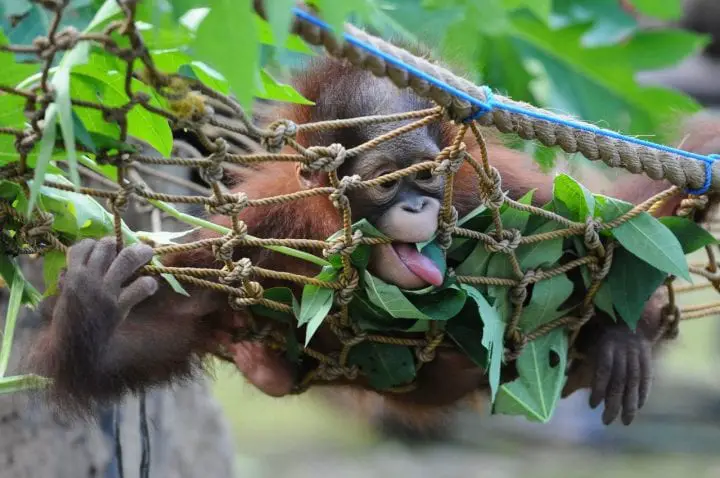
Robertus Pudyanto/Getty Images
In captivity, orangutans can use iPads. Like bonobos, they can use arbitrary symbols to communicate with humans about food, objects, and some abstract concepts. Plus, when they were shown bowls with differing amounts of grapes, they learned the game’s abstract rule that pointing to the one with fewer grapes would actually earn them the bowl with more grapes.
1. Dolphins
While on land, humans seem to have no equal, but when it comes to seabound life, we have some serious aquatic competition. Dolphins are creative problem solvers who love to play. They’ll play tag or even slide off the back of a humpback whale just for fun. When hunting fish, they sometimes use tools like sponges or conch shells.
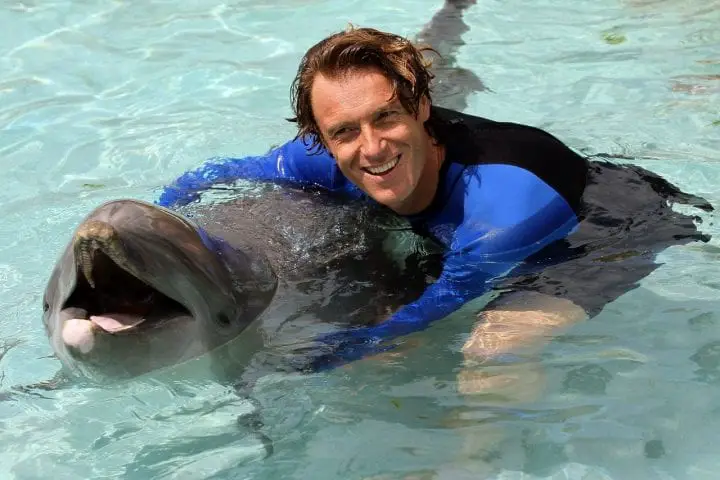
Chris McGrath/Getty Images
Even more intriguing is the fact that dolphins seem to have their own names, or rather “signature whistles.” They will come when their name is called and respond back with the same whistle. Sometimes, dolphins will even use another dolphin’s signature whistle when that individual isn’t around. Are they gossiping? Possibly.